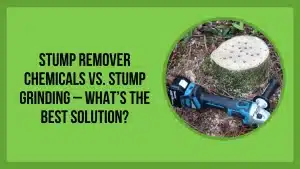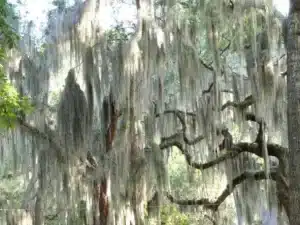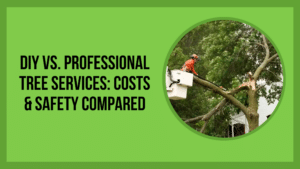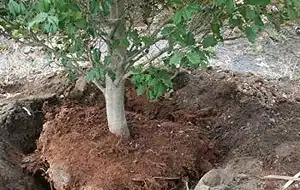Tree stumps can be an eyesore in your yard. They take up space, attract pests, and can even become a safety hazard. That’s why our Tampa tree removal and stump grinding services are designed to give you instant results with zero mess and minimal downtime.
When it comes to removing them, homeowners often face two choices: using stump remover chemicals or hiring a professional stump grinding service.
Both methods have their pros and cons, but if you’re looking for a fast, effective, and long-term solution, it’s important to know which option works best.
Let’s break down the differences between these two stump removal methods and see which one is the right fit for you.
Stump Grinding vs. Chemical Stump Killers
When it comes to removing an unwanted tree stump, homeowners have two main choices: using chemical stump removers or hiring a professional stump grinding service. Both methods have their pros and cons, but the right choice depends on your goals, timeline, and budget.
If you’re debating between DIY chemical solutions and stump grinding, here’s what you need to know about each option—and why stump grinding is often the best, most effective solution.
Chemical Stump Removers: A Slow and Uncertain Process
Chemical stump removers work by accelerating the natural decay process, making the stump softer over time.
Most stump killers contain potassium nitrate, a substance that speeds up decomposition by providing nitrogen to fungi that break down wood.
How Chemical Stump Killers Work
- Drilling Holes into the Stump – Homeowners must drill several deep holes into the stump to allow the chemicals to penetrate the wood.
- Applying the Chemical – The stump remover (usually in powder or liquid form) is poured into the drilled holes.
- Waiting for Decomposition – Over four to eight weeks, the stump gradually begins to rot and soften.
- Manual Removal – Even after the stump has decayed, you still need to break it apart with an axe or burn it to complete the removal.
Disadvantages of Chemical Stump Killers
🚨 Takes Weeks (or Months) to Work – Stump killers don’t offer instant results. If you want your stump gone immediately, this isn’t the best option.
🚨 Still Requires Manual Labor – Even after chemical treatment, you need to manually break apart the softened stump, which can be difficult if the roots are still strong.
🚨 Environmental Risks – Some stump remover chemicals can harm nearby plants, grass, and soil if over-applied. They may also pose risks to pets and wildlife.
🚨 Potential Fire Hazard – Some homeowners speed up the process by burning the chemically treated stump, which can be dangerous, especially in dry conditions.
🚨 Ineffective for Large Stumps – The larger the stump, the longer the chemical process takes. Some hardwood species may not decompose easily, making this method ineffective.
Stump Grinding: Fast, Efficient, and Long-Lasting
Stump grinding is a mechanical removal process that eliminates the entire stump in minutes. This method uses a powerful grinding machine to shred the stump into wood chips, leaving the area clear and ready for landscaping.
How Stump Grinding Works
- Professional Assessment – A trained tree service expert evaluates the stump’s size, root depth, and location to determine the best grinding technique.
- Stump Grinding Process – A heavy-duty stump grinder uses a rotating blade to grind the stump below ground level, reducing it to mulch.
- Cleanup and Finishing – Once the stump is ground down, the wood chips can be used as mulch, or the area can be prepared for grass seeding, replanting, or new landscaping.
Advantages of Stump Grinding
✅ Instant Removal – Unlike chemical stump removers that take weeks, stump grinding eliminates the stump in a single day.
✅ No Harmful Chemicals – Since it’s a mechanical process, stump grinding is an eco-friendly solution that doesn’t contaminate the soil or pose risks to pets and plants.
✅ Prevents Pest Infestation – Decaying stumps attract termites, ants, and other wood-boring insects. Stump grinding removes the food source, keeping pests away from your yard.
✅ Stops Regrowth – Unlike chemical treatments that may leave some roots intact, stump grinding completely eliminates the stump, preventing any chance of new sprouts forming.
✅ Safe and Controlled Process – Stump grinding is done by trained professionals using specialized equipment, ensuring the job is completed safely and efficiently.
Which Stump Removal Method is Best for You?
If you’re looking for a fast, safe, and permanent solution, stump grinding is the clear winner. Chemical stump killers might seem like a convenient DIY option, but they take weeks to work, require manual labor, and don’t guarantee complete removal.
Homeowners who want to avoid lengthy wait times, chemical risks, and extra effort should opt for professional stump grinding, which provides immediate results with no hassle.
If you’re ready to get rid of that unwanted tree stump quickly and safely, contact a stump grinding service today for a free estimate.
How Professional Stump Grinding Works
Professional stump grinding is a fast and efficient method that removes a tree stump below ground level, eliminating the need for chemicals or manual labor.
This process is performed by trained professionals using high-powered stump grinders, ensuring a safe and complete removal.
1. Stump Assessment & Site Preparation
Before grinding begins, a tree care expert will inspect the stump to determine:
- The size and type of wood (hardwood vs. softwood).
- The depth and spread of the root system.
- Any nearby obstacles like sidewalks, fences, or underground utilities.
The surrounding area is then cleared of debris to ensure a safe workspace.
2. Stump Grinding Process
A stump grinder is a heavy-duty machine equipped with a rotating cutting disc. The blade has hardened steel teeth that chip away at the wood, reducing the stump to mulch.
- The grinder starts at the top of the stump and systematically moves downward, grinding 4-12 inches below ground level.
- If deeper grinding is needed (e.g., for replanting), the technician may remove more of the root system.
3. Cleanup & Soil Restoration
After grinding is complete, the remaining wood chips and mulch can be:
✔ Used as organic mulch for your garden.
✔ Hauled away upon request.
✔ Used to fill the hole where the stump was removed.
Once the area is leveled, you can plant grass, flowers, or even a new tree, making stump grinding an ideal choice for those planning landscaping projects.
This process is quick, effective, and environmentally friendly, ensuring a clean and stump-free yard without the hassle of waiting for chemicals to work.
Why Choose Panorama Tree Service for Stump Grinding?
If you’re looking for fast, safe, and affordable stump removal in Tampa, our stump removal experts Tampa have you covered.
✔ Licensed & Insured Professionals – Our team has years of experience in stump grinding and tree removal.
✔ Same-Day Stump Removal – No need to wait for chemicals to take effect.
✔ Eco-Friendly Solutions – We remove stumps without harming the environment.
✔ Serving Tampa & Surrounding Areas – Hillsborough, Pinellas, and Manatee counties.
FAQs About Stump Removal
Q: Is stump grinding better than using chemicals?
Yes. Stump grinding removes the stump instantly, while chemical stump removers take weeks or months to work.
Q: Will the tree grow back after stump grinding?
No. Unlike chemical treatments that may leave parts of the root system intact, stump grinding eliminates the entire stump and prevents regrowth.
Q: How much does stump removal cost in Tampa?
The cost depends on the size of the stump, but most stump grinding services range from $100 to $300 per stump.
Ready to Remove Your Stump? Contact Us Today!
Don’t waste months waiting for a chemical stump remover to work. Get fast, professional stump grinding with Panorama Tree Service.
Prefer to book online? Get in touch with our team today and schedule your stump grinding quote in just minutes.
📞 Call [(813) 234-9842] for a Free Estimate!
📍 Serving Tampa, Brandon, Clearwater & Surrounding Areas.








2 Responses
Will Potasium Choloride work for killing a stump?
Yes, putting Potassium Chloride on a stump might help to get rid of it. Potassium Chloride can sometimes interfere with the stump’s ability to grow, making it die over time. However, it might take a while, and the results can vary. If you want a quicker option, you could consider using our dedicated stump remover service. Always follow safety instructions when handling chemicals.